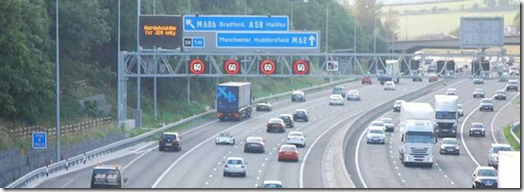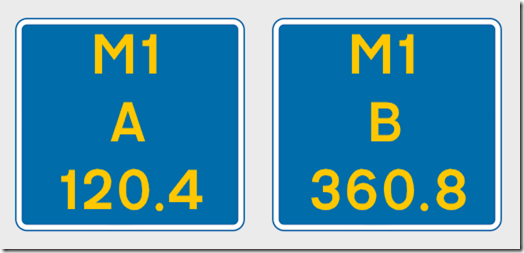 I’ve said it before, but this is about 50 years late. But better late than never.
I’ve said it before, but this is about 50 years late. But better late than never.
As of today, 4 June 2018, learner drivers will be allowed on motorways as long as they’re with a fully-qualified instructor and in a car with dual controls fitted.
The Highway Code has also changed with effect from today. Specifically, Rule 253. This paragraph has been added:
From 4 June 2018 provisional licence holders may drive on the motorway if they are accompanied by an approved driving instructor and are driving a car displaying red L plates (D plates in Wales), that’s fitted with dual controls.
Apparently, learners are still not allowed on certain roads – designated “special roads”. Motorways were specifically designated “special roads” until today, but the Law has changed on that. So the big question has to be: what other “special roads are there?”
I have to be honest and say that until I saw this email from DVSA, I had no idea that there was a third category of non-private carriageway beyond normal roads and motorways. After looking it up, it would appear that I wasn’t alone, and a FOI enquiry was made on the subject in 2016 by someone.
It would seem that there is only one “special road” in the whole of the UK. Highways England – and even they had to look into it – responded to the FOI request with:
From the information that we hold, the only non-motorway special road that has been identified is the A282 in Essex and Kent, between M25 junction 30 and south of M25 junction 1b. This section of road includes the Dartford – Thurrock River Crossing.
Why does this country have to be so f—ing stupid? But anyway, the fact remains that as of today (4 June), learners can be taken on any road in the whole of the UK – except for the f—ing A282 in Essex and Kent (unless another one crawls out of the woodwork).
Jesus H Christ.
Update: A reader informs me that there is a stretch of the A55 in North Wales which is also classed as a “special road” (and maybe part of the A1 ‘oop north’). I’ve actually driven on that when visiting Llandudno one time before I became an instructor.
Ahhh. Llandudno. Every other shop is a Mobility shop. And (some) people drive around with wheelchairs on the rhino horns on the back of their cars. I’m not making that up. Much. And you’ll get tarred and feathered if you pronounce “Llandudno” the way it’s spelled while you’re there.
 I originally wrote this back in 2012, but it has had a run of hits lately so I thought I’d update it.
I originally wrote this back in 2012, but it has had a run of hits lately so I thought I’d update it.